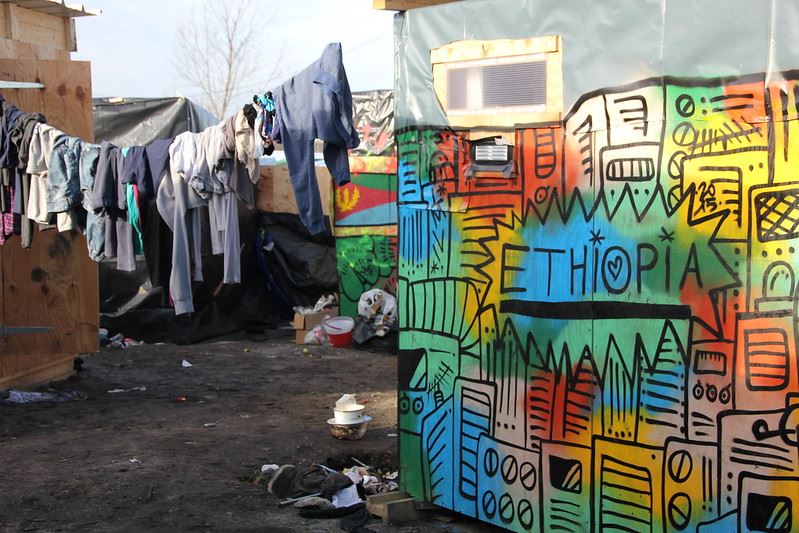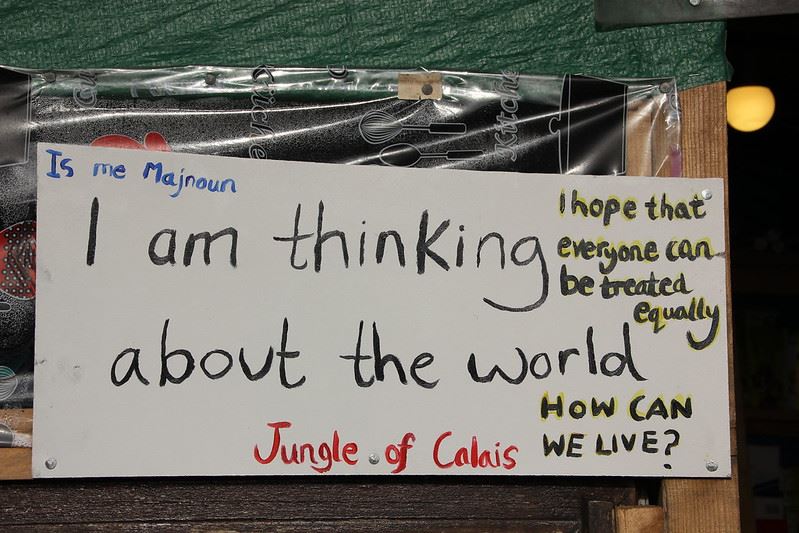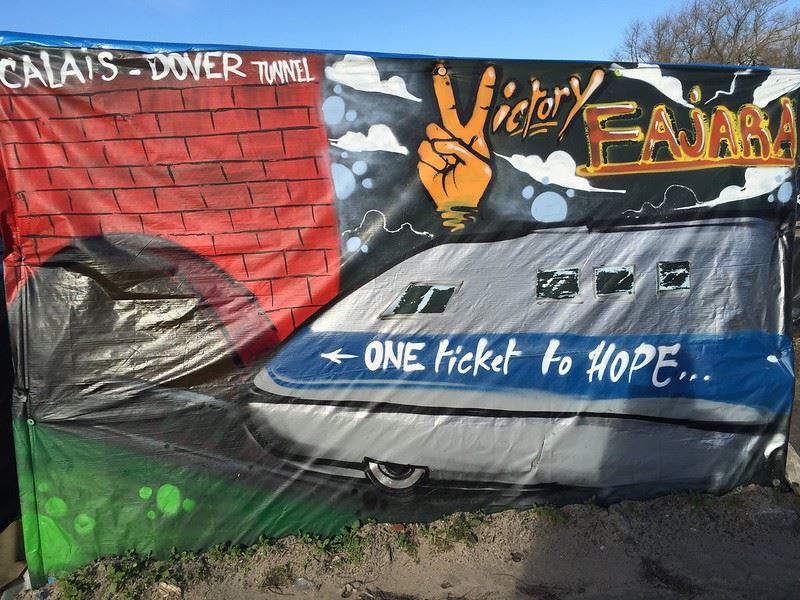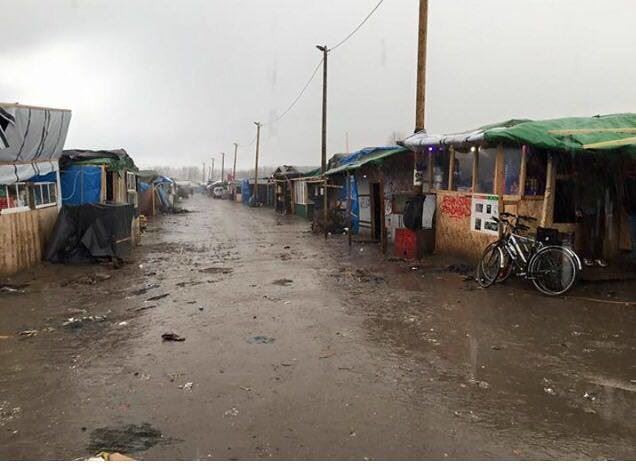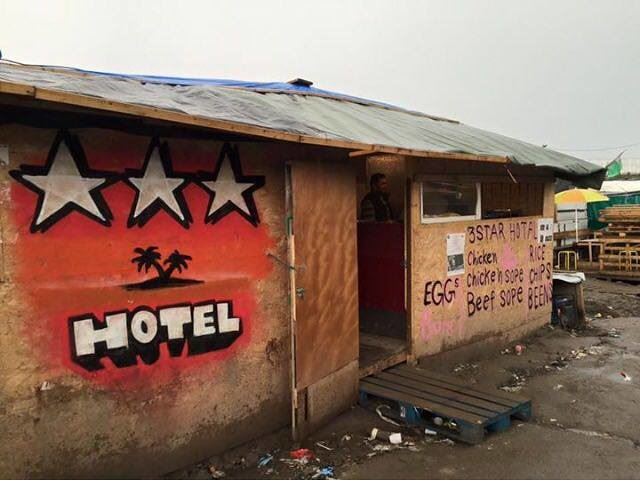| Liz Gleeson : A Movement Teacher in the Jungle of Calais Interviewed by Corrine Julve
photo : Malachybrowne
by admin, 3rd March 2024
Liz Gleeson is an Open Floor (Therapy in Motion) teacher. She is also a psychotherapist and educator in the field of grief. She has designed an online course, Shapes of Grief, and is working on her PHD in the field of grief education. She lives in Wicklow, Ireland. Faint hopes and crashed illusions No lions, nor elephants running around in this Jungle…. No giraffes smoothly bending or stretching their long necks out to grab some chunky plants from the ground or up a tree… This jungle is “makeshift huts, made out of corrugated iron and debris, disorganized alleyways, some portable toilets, and two bulldozers sent by the French government waiting to dismantle the camp at any time… And Chaos everywhere.” This is how Liz remembers this place, seven or eight years after having landed there to run a conscious dance workshop. Even though she now strongly refutes the mere idea, “it would be far too arrogant of me to say I’ve taught a workshop in the way you and I expect a dance workshop to be”. Liz’s experience in Calais certainly sheds light on“Teaching outside our comfort zone”. For context, the city of Calais is located in the North of France and happens to be the closest French town to England "two steps away” on the other side of the Channel. Thousands of refugees from Africa and the Middle East ( Sudan, Afghanistan, Darfour, Syria, Iraq, Eritrea, Ethiopia to name a few) have been landing there since the 90s. Coquelle and Sangatte, areas on the outskirts of town, have been described as “the biggest shanty towns in Europe” for the last decade. In 2015, the number of refugees had reached 9000 people, with the zone being classified as “Seveso” by European norms (meaning containing a high level of toxicity). No lions, nor elephants running around in this Jungle… but certainly plenty of wildness. After years of repeated abuse and violence, women and children have actually been set apart from the rest of the community. No lions, nor giraffes … but plenty of faint hopes and crashed illusions. For years, reading or hearing about this place, and about the harshness the refugees had to endure merely to survive, amounted to reading and hearing about hell. Hell on Earth. Hell in France. Hell next door… However touched we may have felt by this humanitarian crisis, very few dared to quit their own comfort zone in order to create a lesser Hell for the inhabitants in the “Jungle of Calais”. And, fortunately some people did … All volunteers : social workers, nurses, teachers, and artists. The English Good Chance Theatre whose work is based on the principle that “expression is a Human right” came, and have since led similar projects around the world. In 2015 they built a big inflatable dome to bring the arts to the Jungle, with artists and poets coming and contributing. Finding herself a single mother of 4 young children, after getting divorced, Liz recalls being quite vulnerable at the time feeling her nervous system was dysregulated and a sense of “hyper vigilance” and "just couldn’t cope with the coverage of the Mediterranean refugee disaster". What struck her most was the viral image of a little lifeless body of a child lying on the beach: "Alan Curdy was his name. His body completely clothed was the same size as my little boy’s". Admitting to be "someone that goes into action when stressed or overwhelmed", Liz felt that j"ust sitting there and doing nothing” wasn’t a comfortable option for her… It simply wasn’t an option at all. So, when she saw the Good Chance Theater video, she immediately wrote to them stating "I have a background in Drama Therapy and I teach a movement practice called Open Floor (Therapy in Motion) … and I can do the dishes. I can offer you a week… If that’s any good to you?" Their reply was immediate… Come ! Culturally incorrect and inappropriate Liz shared her decision and this opportunity with the Open Floor marketing team and Stacy Butcher (an Open Floor teacher in the US) who happened to be flying to Europe planned on joining her. They raised 1000 euros with a GoFundMe and off they went to Calais. They booked "a cheap room in the Center of the pretty town of Calais, surrounded by the French boulangeries", but when they reached the Jungle the next day, they were met with a different story, a different scenery, and a very different reality altogether. Liz felt overwhelmed by the depth of the gap separating her desire to help, from the refugees' daily reality. As a stranger landing in a strange country, she didn’t speak the language, didn’t have the keys, didn’t have the codes … “Chaos” is the word that comes as she gives a description of the situation. Liz speaks of "a wonderful young woman Amy from the Good Chance Theater who had a sense of awareness beyond her young years", who helped her with certain practical aspects of daily life in “the Jungle”. Liz states : “It was so naive of me to think that we could bring our practice here, thinking we could make a difference when people are simply in a state of survival. To bring a conscious dance practice to the “Jungle” of Calais was culturally incorrect and inappropriate”.
photo : Malachybrowne What has actually happened. How did the workshop or whatever name we may call it go ? On the first day, or was it the second ? The men had gathered in the Dome, some looking a lot older than their age and some young boys too. Most of them were sitting around the edges, chatting or staring. Some of them would dance and move in the space, others would carry on riding an old rusty bike around. Some would engage with us.
Did the music bring some sort of togetherness in the space ? My playlist felt completely and culturally wrong, even though I had downloaded some Afghani and Ethiopian tunes. They didn’t understand it and it all appeared foreign to them. The men appeared intrigued by the sound-system. And pretty soon Liz asked them about their own music, what they liked, what music they wanted to hear. They looked in their phones and there was one tune in particular that they played over and over again. Soon we were listening to their music and they taught us some of their dances. They did a circle dance performing special movements. Liz stated “they needed familiarity, with repetition in order to create safety.. You could see this was meaningful for them. We moved together with these Afghani men, dancing these beautiful movements together”. And there were other nationalities in the room — Ethiopian, Eritrean, Syrian…— and they too wanted their music to be played. Liz offered that they take a turn and despite what it may seem like to us, perhaps the beginning of some connection and sharing, again she thought, “this is pure Chaos. What are we doing? Is this helping anybody?” A stronger feeling did overcome the doubts, a sort of deeper self-confidence, a sense of faith, however we may want to call it. It popped up as a “winged savior” whenever extra grounding was needed. In Liz’s words… “This is the language I speak. I speak Dance-Therapy and Movement Practice and this was the guide to carry on and show up day after day, doing what we could do honestly ”.
photo : Malachybrowne Dancing in togetherness On the 2nd day or was it the 3rd ?… “There were about 30 men, half of them were sitting talking to each other… the other half were on the floor…doing their own things…It was pure chaos. A knife had fallen out of someone’s pocket onto the ‘dance Floor’. I was playing my music, standing there, and sweating inside, thinking : ‘ on top of being completely chaotic the place is also scary’”. At this point an actor from the Good Chance Theater walked into the space, “putting his hands around his face, he looked out towards the scene and started to cry. Then the men noticed him and he began to be part of the dance along with some other volunteers who had joined in too”. After a while someone came up and said : "this is amazing… it’s the first time these different nationalities have danced together, usually they fight". “I didn’t know the history. I didn’t know what was happening in front of me. It looked like Chaos to me, but for someone who knew the place, it was a fine moment. And this was a great lesson.”
photo : BScar23625 On the 4th day or was it the 5th ?… She played some Irish music… And they all went no not this music, but she insisted “I played your music, let’s listen to mine now”. And she actually remembers this beautiful moment when some soft Irish music was playing and they all formed a big circle, shoulders to shoulders, all nationalities… Refugees, volunteer workers and members of the Good Chance Theater, united and swaying around all together. It was as though some Irish magic had managed to sneak into the Jungle of Calais. On the last day, a man from the East Coast of Africa came to say he was really grateful and thank her for “showing that the world hadn’t forgotten them”. He invited Liz for tea, stating “that’s how we thank people in my country”. He guided her along the small and winding alleyway up to his own small hut “made of corrugated iron, the size of a single mattress, where some water was boiling in a can”. She recalls him being so happy to have a bit of “normal life” sharing a cup of tea and showing her sketches of all the drawings that he had done since arriving in the Jungle. No Lions or elephants in these sketches, but some wiry figures and tired faces, a bit of gray-blue sky, some seaside birds,and a dirt road leading to the outside of the Jungle, far away from chaos and hopefully closer to brighter days…
photo : BScar23625 Upon returning home, Liz received a “thank you” message from Mohamed. He shared that he really enjoyed their time (Stacey and hers) in the Jungle and just wanted to let her know he had made it through the Channel, through the frontier. Other messages came from people in Ireland and England, saying they had watched her FB sharing of her time in “the Jungle '' and how it had inspired them to set up their own project. “So though my contribution wasn’t anything grand, it inspired others to also do something. Bringing conscious dance to “the Jungle of Calais” was culturally incorrect. Perhaps inappropriate, but some seeds have been planted, some actions have been taken, some thank-yous have been communicated. There was some connection established and some circles formed under the inflatable dome of the Good Chance Theater”. After all… who said conscious dance was only and solely about dancing ? |

